A kitchen sink is a key feature in any kitchen. It is important to measure your kitchen sink before you purchase one, to ensure that you get the perfect fit. This article will walk you through the process of measuring a kitchen sink. Such a procedure is essential if you want to ensure that your new sink will fit perfectly in the designated space. It will provide you with tips and tricks for getting an accurate measurement so that you can find the perfect sink for your home!
How Is a Kitchen Sink Constructed?
A kitchen sink is usually constructed of stainless steel, copper, fireclay, granite, or composite materials. Depending on the material chosen for construction, there may be an additional need to address water resistance through a sealant or wax coating. The basic construction involves bolting the sink bowl into position and then connecting it to the plumbing system that supplies fresh water and removes wastewater.
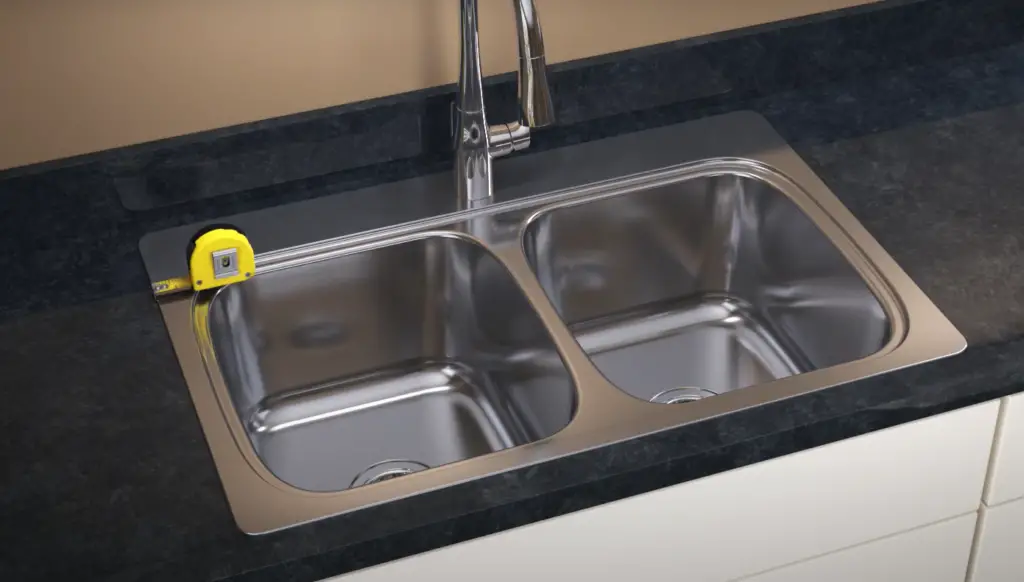
No matter what material is used to construct a kitchen sink, it should be installed according to the manufacturer’s instructions to ensure proper drainage and sealing. Regular maintenance is also important to keep the sink looking its best and functioning properly over time. This typically involves cleaning the basin with mild soapy water regularly and periodically checking the integrity of any seals or waxes applied to prevent leaking [1].
What to Do Before You Measure a Kitchen Sink?
Before you measure a kitchen sink, it is important to consider the size and shape of the area where you plan to install it. You’ll also want to determine what type of installation you are looking for and what features or accessories are necessary.
- Measure the countertop space: First, use a tape measure to determine both the width and length of the countertop space that will accommodate your new sink. Write down these measurements so they can be used when selecting a sink size that fits properly in your area;
- Assess available cabinet space: Next, check to see how much cabinet space is available beneath the sink area where plumbing fixtures such as taps, disposals, and drain pipes may be installed. This information is important for choosing the right sink, as some require more space for these features;
- Consider water flow: Make sure to think about how your sink will be connected to a water source. If you are replacing an existing sink, this step is easy; but if you’re installing it in a new spot, it may require additional plumbing work;
- Accessorize accordingly: Finally, assess what type of accessories—such as trays and racks—you plan to use with your kitchen sink, and make sure that the measurements are taken into account when selecting your new sink size;
By following these steps before measuring a kitchen sink, you can be sure that you have all the necessary information when selecting the best size and style sink for your kitchen.
3 Ways to Measure a Kitchen Sink
Measuring the Old Sink
If you are replacing an existing sink, the simplest way to measure for a new one is to remove the old sink and trace its outline onto a piece of paper. Measure along each side and note any differences in size or shape. Be sure that any measurements you take are accurate so that your new sink will fit securely into the countertop space.
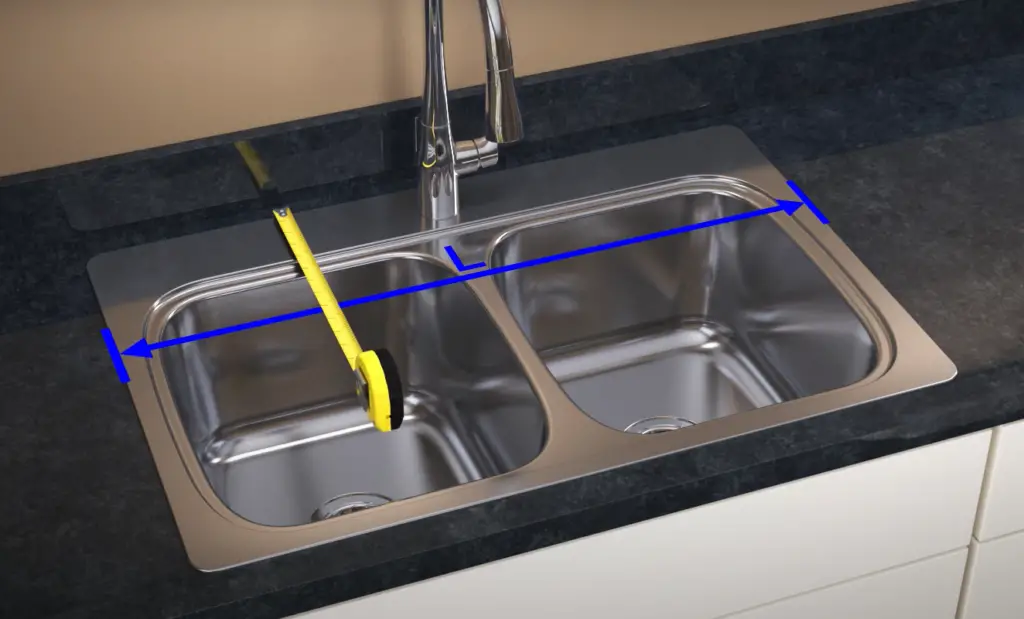
Measuring Your Countertop Space
Measuring Yourself
If you are purchasing a new kitchen sink online, it is important to measure yourself as well as the countertop space or existing sink. Measure your height, arm span, and reach when standing in front of the sink so that you can select one that fits your body type best. If possible, try different sinks out at a store before purchasing so that you know what size and style will be most comfortable for you to use.
Once you have taken all of the necessary measurements, it’s time to start shopping for your new kitchen sink! Make sure that any sink you select meets the dimensions and specs of what will fit in your countertop space or existing sink opening. With the right measurements and a bit of research, you can find a great kitchen sink that both looks good and fits well in your home [2].
How to Choose a Kitchen Sink?
When it comes to remodeling your kitchen, an important decision is the kind of sink you will use. Kitchen sinks come in a variety of styles and materials, so choosing between them can be difficult.
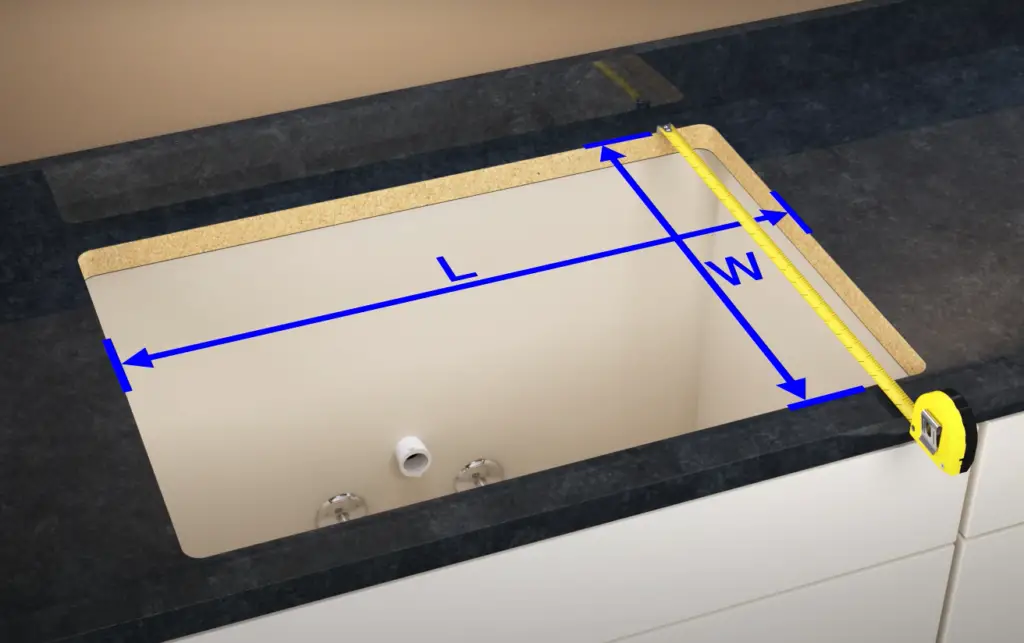
Here are some tips to help you make the best choice for your needs:
- Determine Your Budget: Before you start shopping for a new kitchen sink, determine a budget that works for you. Consider both material and installation costs when setting your budget. This will help narrow down your options and give you a better idea of what type of sink within your price range is most suitable for your home;
- Think About Size: It’s important to select a kitchen sink that fits the size of the countertop where it will be installed. Measure the countertop carefully and make sure to get a sink that is slightly larger so it fits properly;
- Consider Maintenance: Different materials require different levels of maintenance and care, so consider how much time you are willing to spend on upkeep before making your selection. Stainless steel sinks are usually very easy to clean and maintain, while other materials such as granite can take more effort but offer a unique look for your kitchen;
- Choose the Right Mounting Method: Undermount sinks are becoming increasingly popular due to their sleek aesthetics and ease of installation, but for some styles of counters a top-mount or drop-in may be more suitable. Make sure to research each option thoroughly before making your decision;
- Pay Attention to Details: Even if you are on a budget, take the time to examine all the details of your prospective sink. Look for quality construction, seamless welds, and a thick sound-deadening pad that will help reduce noise from dishes or running water. All these features can make a big difference in the overall look and feel of your kitchen [3];
How to Maintain the Kitchen Sink?
Maintaining the kitchen sink should be a regular part of your cleaning routine. Here are some tips to keep it looking and functioning properly:
- Clean it regularly – It is important to clean your kitchen sink regularly. Wipe down the surface with an all-purpose cleaner or baking soda and water mixture. It will help remove any dirt and residue that has built up over time;
- Scrub away stubborn stains – For stubborn stains, use a metal scrubber or nylon scouring pad with a little bit of soap and warm water. This will help loosen up the build-up so you can easily wipe it away;
- Clean around the faucet – Make sure when you are cleaning the sink, that you also clean around the faucet. This will help keep any dirt or grime from building up and clogging your pipes;
- Disinfect – To disinfect your kitchen sink, use a mixture of ¼ cup of white vinegar and 1 gallon of warm water. Soak a cloth or sponge in this solution and wipe down the surface of the sink;
- Polish – After you have finished cleaning and disinfecting your kitchen sink, give it an extra shine by polishing it with a soft cloth that has been dampened with mineral oil or baby oil. Then buff it dry with a clean towel;
- Avoid harsh chemicals – When dealing with any type of cleaning, it is important to avoid harsh chemicals. Harsh chemicals can damage the finish of your kitchen sink and cause discoloration or etching. Stick with mild, non-abrasive cleansers whenever possible;
- Seal – Lastly, if you want to keep your kitchen sink looking its best for a long time, consider sealing it periodically. Sealing the surface of the sink will help protect it from dirt and staining;

Following these steps will help ensure that your kitchen sink is well-maintained and stays looking great for years to come!
FAQ
How do I measure a kitchen sink for replacement?
You will need to measure your current sink, including overall width and depth, as well as the size of the cutout in your countertop. Measure the length of the current sink from front to back, the distance across the top from left to right, and then how deep it is. Additionally, you will need to measure the area where the sink will be mounted to your countertop. This should include measurements for both the length and width of the cutout. With these measurements handy, you can shop for a new kitchen sink that fits perfectly in your space.
What type of material is best for kitchen sinks?
The most popular types of materials used for kitchen sinks are stainless steel, granite composite, cast iron, and solid surface. Each material has its own benefits and drawbacks, so it’s important to weigh all of your options before choosing the right one for your kitchen. Stainless steel sinks are usually the most affordable option and they’re easy to clean. Granite composite is a popular choice due to its aesthetics, while cast iron and solid surface materials have excellent durability. Ultimately, the type of material you choose will depend on your budget, personal preferences, and how much wear-and-tear you anticipate from daily use.
What size should I get for my kitchen sink?
The size of your kitchen sink will depend on both the overall size of your countertop as well as your specific needs. Smaller spaces may require a single bowl sink, while larger countertops can accommodate a double bowl sink with extra space for prep and cleanup. The size of your cutout in the countertop will also determine the type of sink you’ll need to purchase. Keep in mind that smaller sinks may make it more difficult to wash large pots and pans, so if you frequently cook large meals, you may want to opt for a slightly bigger model.
Are kitchen sinks easy to install?
In most cases, installing a kitchen sink is fairly straightforward and doesn’t require any specialized tools or skills. You’ll need to follow steps such as attaching the plumbing fixtures (drainpipes, faucets), connecting the sink to the countertop, and making sure everything is properly sealed. If you’re not comfortable with the task, it’s best to hire a professional contractor or plumber for assistance to ensure the job is done properly.
How often should I clean my kitchen sink?
It’s recommended that you clean your kitchen sink at least once a week using soap and water to keep germs and bacteria at bay. Additionally, you should scrub the sink after each use to remove any food particles that may be stuck in crevices. You can also use natural cleaning solutions such as white vinegar or baking soda regularly to help maintain its shine and prevent build-up.
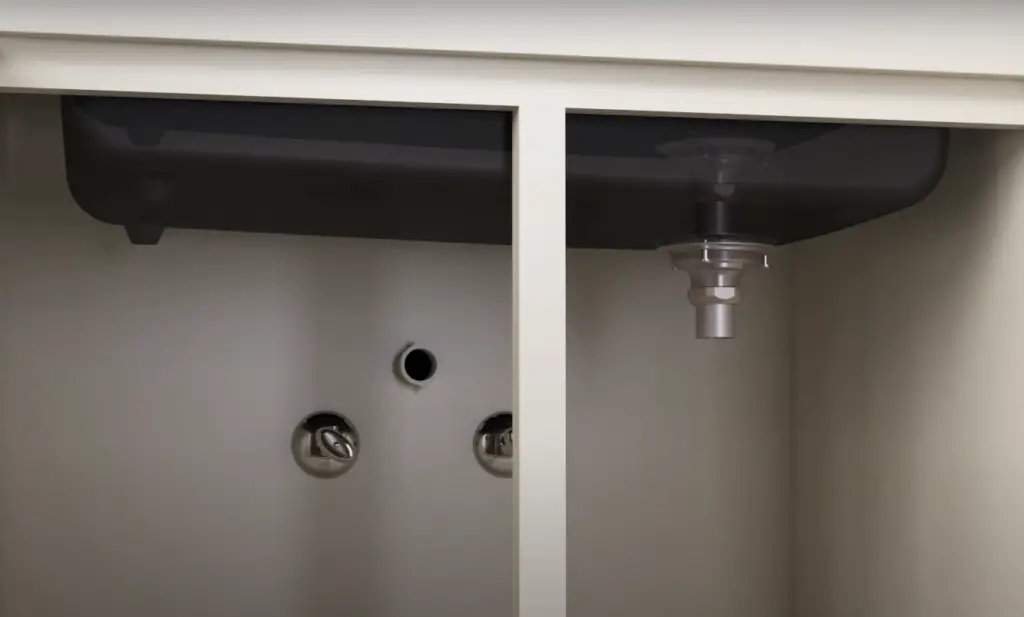
Do you measure a sink from the inside?
When measuring a sink, it’s important to measure from the inside of the bowl. This will ensure that you get an accurate measurement for your cutout and that the new sink will fit properly in its space. You should also remember to measure both the length and width of the sink, as well as how deep it is from top to bottom.
What are the dimensions of a standard kitchen sink?
The dimensions of a standard kitchen sink vary depending on the type and size of sink you’re looking for. Single bowl sinks usually measure between 50 to 61 cm in length, 46 to 53 cm in width, and 20 to 25 cm in depth. Double bowl sinks typically measure between 66 to 81 cm in length, 48 to 63 cm in width, and 20 to 25 cm in depth.
Are there any special considerations when buying a kitchen sink?
When shopping for a new kitchen sink, it’s important to consider factors such as material type, budget, durability needs, and installation requirements. In addition, you should also take into account your personal preferences regarding aesthetics and design. Finally, make sure the measurements match up with the cutout in your countertop to ensure a good fit.
How do you measure a kitchen sinkhole and cut it?
Measuring and cutting a sinkhole is an important step when installing a kitchen sink. To begin, measure the length and width of the sink bowl that you’ll be installing to ensure it fits properly in your countertop cutout. Next, use a template to trace the shape of the holes on your countertop, and then use a jigsaw or circular saw to cut along the marked lines. Finally, test fit the sink before attaching any plumbing fixtures and make sure all edges are sealed for water tightness.
Do all kitchen sinks have the same size drain hole?
No, kitchen sinks do not all have the same size drain hole. The standard drain hole size for most sinks is 2,5-1,25 cm in diameter, however, some may have larger or smaller sizes depending on the model. It’s important to make sure the drains you purchase are compatible with your sink so you don’t encounter any problems when installing them.
Useful Video: Measuring for a Top-Mount Sink Replacement
Conclusion
Measuring a kitchen sink can be a tricky project. It is important to measure the size and shape of the sink, as well as the countertop or cabinet space it will fit into. Additionally, measurements should be taken to ensure that all plumbing components are compatible with the new sink. With careful measurements and research, homeowners can successfully find a kitchen sink that meets their style and functional needs. By carefully taking measurements, researching materials, and looking for product reviews, customers can purchase a kitchen sink that looks great in their space while being functional and reliable in the long run. Although measuring a kitchen sink may seem overwhelming at first, following these steps can help ensure that you find exactly what you need!
References:
- https://rethority.com/parts-of-a-kitchen-sink/
- https://www.wikihow.com/Measure-a-Kitchen-Sink
- https://www.realsimple.com/home-organizing/decorating/how-to-choose-kitchen-sink





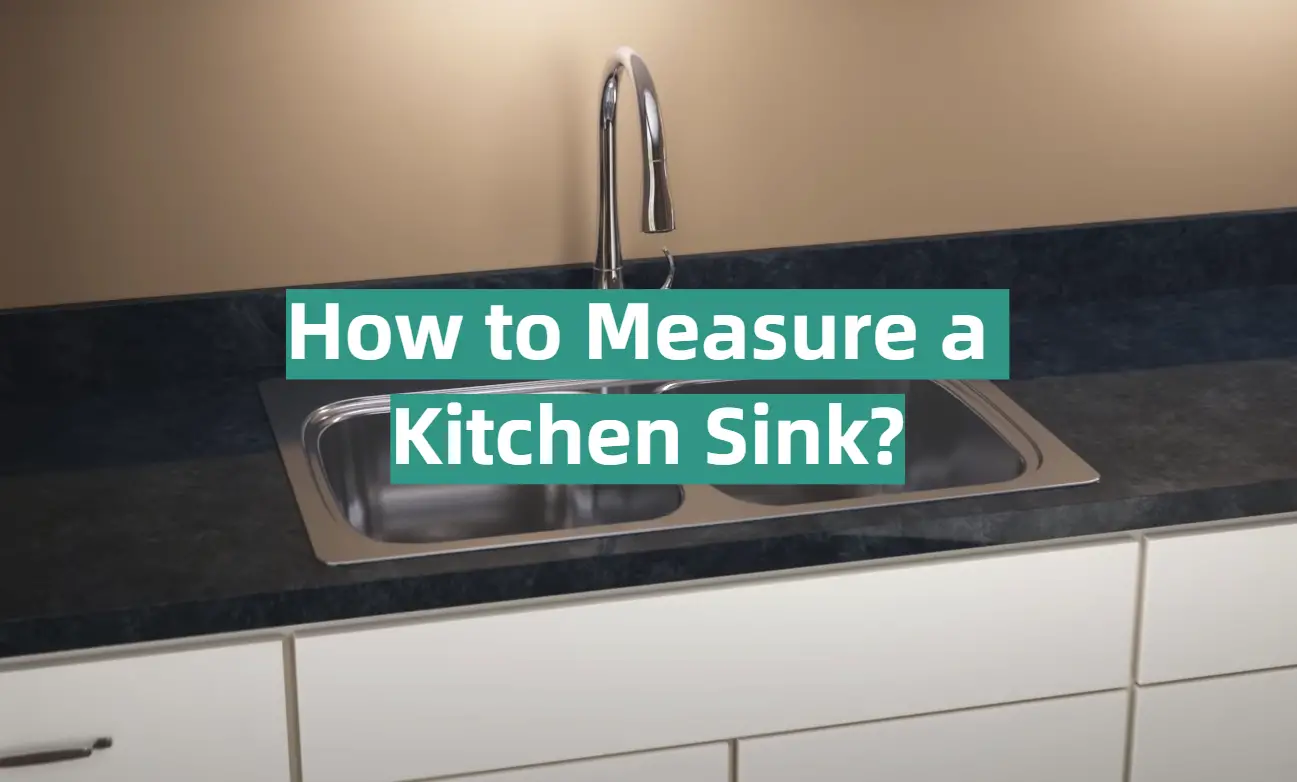








Leave a Reply